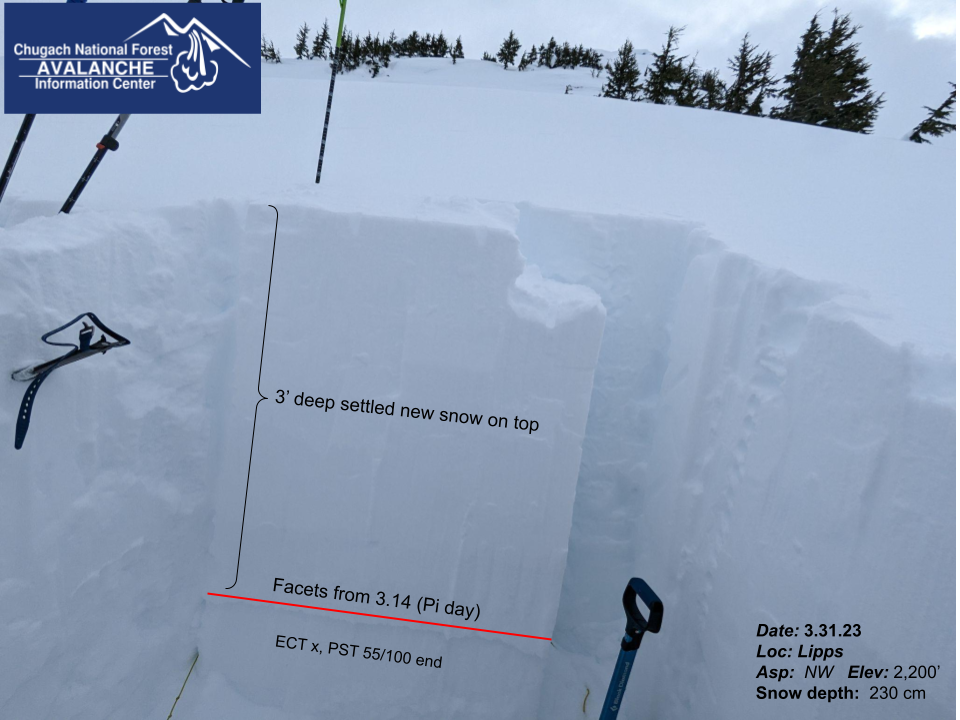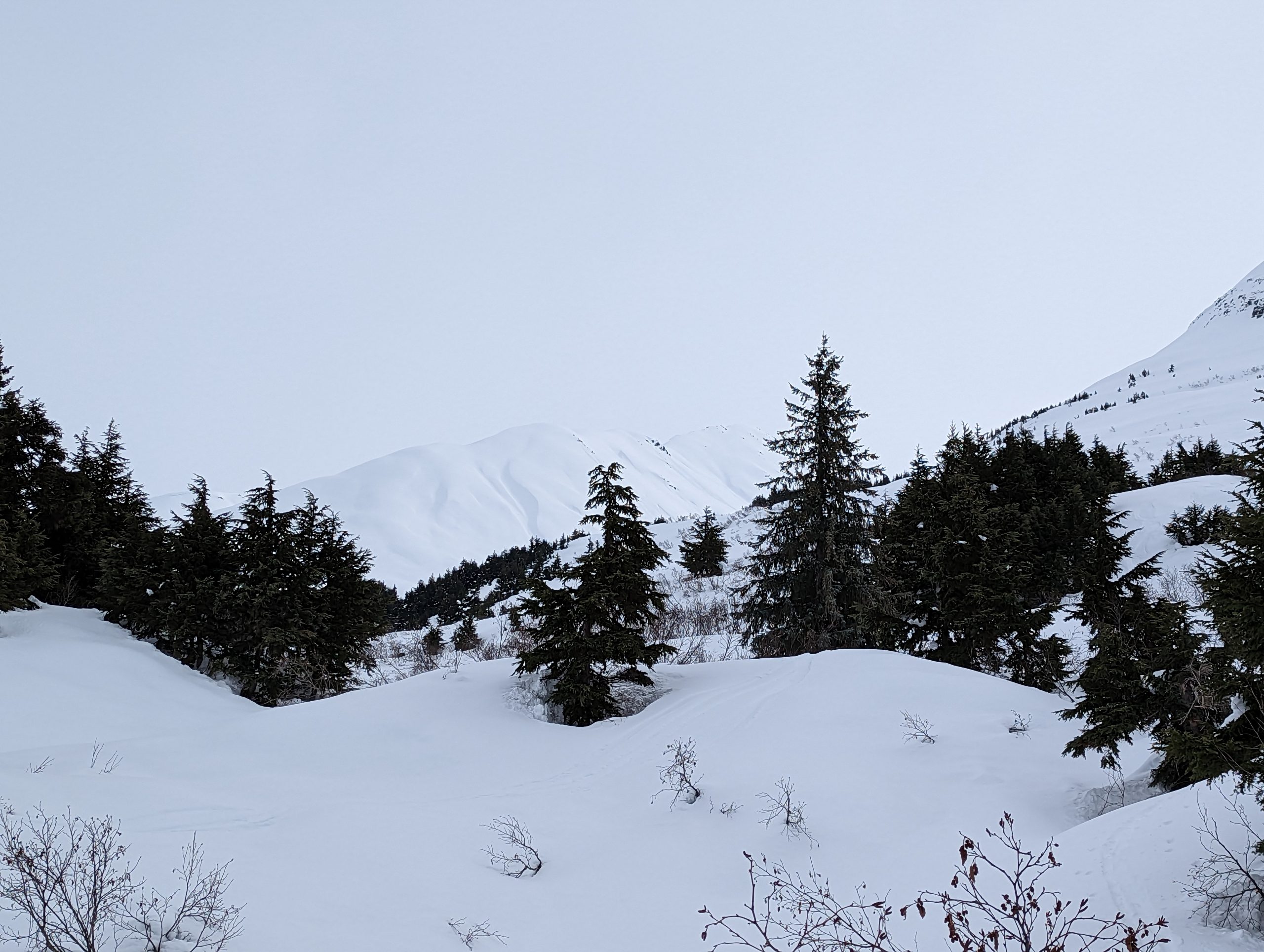Turnagain Pass
|
|
The avalanche danger remains CONSIDERABLE above 1000′. Very large human triggered avalanches 3-6′ deep on a buried weak layer are still possible. Over the past 10 days there have been several close calls with avalanches on this layer and due to the consequences of triggering one of these avalanches we are keeping the avalanche danger elevated. In addition we are expecting 10-20 mph winds today that will build fresh wind slabs up to a foot deep at upper elevations. We continue to recommend sticking to low angle terrain and avoiding runout areas of overhead avalanche paths.
Below 1000′ the avalanche danger is MODERATE. Wet loose avalanches on solar aspects, glide cracks, and areas in the runout of larger avalanche paths are the main dangers below treeline.
SKOOKUM VALLEY will close to motorized use TODAY, April 1st, due to the National Forest Plan. The boundary extends East of the Railroad tracks from Luebner Lake (South) to private property boundary (North). The rest of the Placer River Valley remains open.


